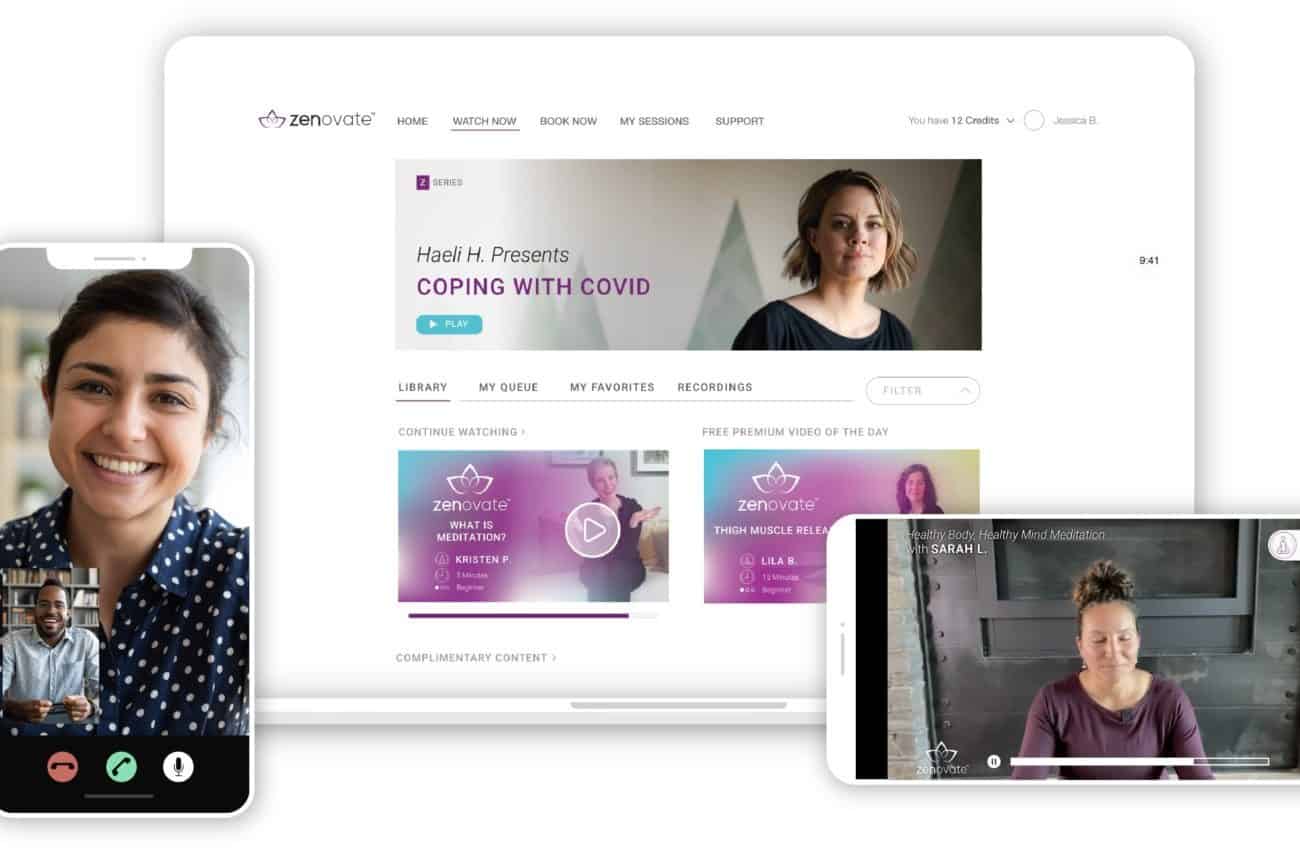Company culture—invisible and mysterious, yet crucial to your company's success. Did you know that employees that don't like their company's culture are 24% more likely to quit? Here you can learn how to change company culture to retain and attract top talent, help people live better lives, and improve the bottom line.
But you don't have to tackle these steps all at once! Try these 8 suggestions first and see how your company transforms.
How to Change Company Culture in 8 Steps
When it comes to how to change company culture, we recommend six small steps:
- Check-in with your team
- Determine your direction
- Encourage employees to grow beyond your company
- Break down the department silos
- Reward and recognize employees
- Allow flexibility
- Give your people the support they need
- Start a dialogue about mental health
1. Check-in with your team
Step one: figure out where your culture stands right now.
Can you describe your company culture? What are your company values? How often do you see those values in action? Do those values fit your organization's goals well?
If it's time to rework your company values, get the whole team involved. At Nivati, a group of employees has formed a Culture Club where we have a dialogue about improving our culture. We talk about what is working and what isn't, then create an actionable plan to address those things.
The more involved you can get your employees, the better! Give them buy-in. It is fun, opens the door to coworker bonding, and can help increase employee engagement.
You can also send out a survey to employees to gather feedback on the current company culture. Here are some company culture survey questions to help you get started. Make sure to ask them questions about their mental health and workload as well. Take note of what aspects of your company culture are strong right now.
2. Determine your direction
Now that you've done some data gathering, determine if you need to pivot. This includes solidifying your company goals. Keep in mind:
- Employee feedback on company culture
- Major changes the company has experienced in the past year
- Your budget
- Customer feedback
- Whether your team will continue working in-person/remotely
Take note of the challenges employees are currently facing at work. Some common ones our clients have encountered are:
- Burnout and overworking
- Work-life balance
- Interpersonal challenges
- Lack of support and recognition
Related: How to Keep Company Culture Strong When all Employees are Remote
Remember that your employees are real live people with families and hobbies, and aspirations. It is essential to feel supported and appreciated.
People who have enough time for friends, family, and hobbies perform better at work. If that means shortening your workdays or giving more paid days off, it just might be worth it.
Related: How to Measure & Improve Employee Morale
3. Encourage employees to grow beyond your company
Supporting an employee's professional development is a no-brainer. Some companies fear professional development is an expense that leads to employee abandonment once they gain more skills. In reality, training is one of the best ways to change company culture.
In reality, that can only happen in a company that doesn't want to grow. Employees want more training and mentorship. Employees recognize the value in training; 59% say that training improves their job performance, and 51% say it helped them improve their self-confidence.
If there are no growth opportunities in the company and no room for advanced skillsets, then they will leave once they gain more expertise.
You can't grow your company while your employees don't grow themselves professionally.
Companies are starting to hold designated certification or learning days each quarter. You can also train managers to mentor their direct reports. Mentorship is powerful—it can help employees grow and even increase their engagement at work.
4. Break down the department silos
Too often, the different departments in a corporate office tend to stick to themselves. This creates an office of silos where workers don't see eye-to-eye.
How often have you seen something like this happen? A project missed a deadline because:
- the design team was late
- the editorial didn't get them the content soon enough
- marketing couldn't decide on the right target
- the project manager was getting mixed messages from the client
- the client's teams had their department problems to deal with
Everything falls apart. And each department points fingers at the other.
Find ways for members of each section to group regularly and discuss how their team's work. When everyone understands how the other teams work and what makes their jobs easier, projects can run much more smoothly.
Related: 5 Major Signs of Burnout, Prevention and Treatment
5. Reward and recognize employees
65% of employees don't feel recognized at work. Employees that feel appreciated at work have higher morale, job satisfaction, and motivation.
Here are some ways you can recognize employees:
- Give shout outs on company Slack channels
- During a team meeting, take 5 minutes for everyone to recognize one awesome thing a coworker did this week
- Provide onsite massage services to employees or give them access to free counseling
- Send a direct message or email to a direct report to let them know how great of a job they are doing
Encourage employees to support each other as well! A short, positive text or email can go a long way.
6. Allow flexibility
As Gen Z enters the workforce and Millennials are busy parenting, the demand for workplace flexibility is skyrocketing.
76% of employees say they'd be more than happy to stick with their current employer—if they could work flexible hours.
Working remotely can help your business cut down on costs and expands your hiring pool, in addition to helping your company appeal to top talent.
Allowing employees to work in the environment that works best for them does wonder for productivity. It also helps create a culture that is trusting and values work-life balance.
7. Give your people the support they need
1 in 4 employees will struggle with a diagnosable mental health issue this year. Even more will struggle with workplace stress, burnout, and physical illnesses.
Businesses have an incredible opportunity to help employees with these challenges. Whether it's paying for an onsite chair massage program, virtual yoga, or employee counseling, there's a lot a company can do.
Since most office workers spend a lot of their hours sitting at computers or chained to desks, simply encouraging physical movement can make a big difference.
Check out these stress management ideas for ways to help out your team. Have managers talk to their direct reports about stress management tools and methods you can better support one another (more on that later!)
Keeping your workers moving and stress-free is the best way to ensure their long and happy careers at your company.
Related: Your Guide to the EAP Implementation and Search Process
8. Start a dialogue about mental health
Now that you've opened the door to better wellness at work start having a conversation about mental health!
Mental health is one of the biggest challenges facing workplaces today. 83% of employees suffer from workplace stress consistently.
Mental health issues are at the core of many companies' culture issues, like overworking, stress, anxiety, company politics, and more. Talking about mental health is the first step to addressing it.
Learn about mental health as a company leader by reading the Manager Training Handbook.
Train managers on talking about mental health with direct reports. You can start by:
- Asking employees how they are truly doing
- Talking about your own mental health experiences and what has helped you
- Learning more about mental health at work and how it impacts company culture
- Getting an EAP that provides employees with resources they need to take care of themselves
So there you have it: how to change company culture in a few simple steps. By taking these steps, your business can work towards a healthier company culture for all.
Disclaimer
By participating in/reading the service/website/blog/email series on this website, you acknowledge that this is a personal website/blog and is for informational purposes and should not be seen as mental health care advice. You should consult with a licensed professional before you rely on this website/blog’s information. All things written on this website should not be seen as therapy treatment and should not take the place of therapy or any other health care or mental health advice. Always seek the advice of a mental health care professional or physician. The content on this blog is not meant to and does not substitute for professional medical advice, diagnosis, or treatment.







